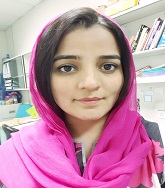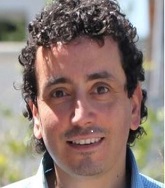Conference Schedule
Day1: May 30, 2019
Keynote Forum
Lifeng Yan
University of Science and Technology of China, China
Title: Near infrared imaging-guided photodynamic therapy

09:30-10:10
Biography
Lifeng Yan has graduated in Physical Chemistry from University of Science and Technology of China (USTC) in 2001, and now is a Full Professor of USTC. His research focuses on carbon materials for energy conversion and storage, biomass conversion and green chemistry, and biomaterials and biomedicine based on polymers. He has published over 160 papers and edited three books.
Abstract
Fluorescent dye molecules with emission wavelength ranging from visible to near infrared could be used as a chromophore for in vitro tumor diagnostics. But the optimal and now commercially available fluorescent dyes are those whose emission lies in the near infrared region (NIR). Pronounced background auto fluorescence and severe tissue absorption and scattering greatly limit the application of dyes with emission in the visible region, while their interferences with long wavelength light are minimal. Nanotheranostics is a combination of nanomaterials and theranostics, which is an attractive candidate for a diverse range of imaging-guided therapy applications. Polymeric nanoparticles responsive to external pH stimuli have attracted much attention for a wide range of applications, especially in biology, such as imaging-guided drug delivery, molecular sensing, tissue engineering, etc. Polypeptide materials are one kind of biodegradable material with potential application in biomedical areas. They can be facilely obtained by the ring opening polymerization of amino acid N-carboxyanhydrides (NCA). Natural amino acids with various side groups provide the possibility for the preparation of polypeptide materials with versatile structures and properties. Recently, photodynamic therapy (PDT) has attracted much attention in cancer therapy in the presence of a photosensitizer which generates singlet oxygen reactive oxygen species (ROS) to kill the cell. We prepared a series of NIR photosensitizer with high yield of ROS and fluorescence, and various polypeptide based nanoparticles has also been designed and synthesized, which make it possible for NIR imaging-guided PDF.
Pall Thor Ingvarsson
Novo Nordisk, Denmark
Title: Spray drying of proteins/peptides–why we should not fear the high temperature

10:10-10:50
Biography
Pall Thor Ingvarsson has completed his PhD in the field of Pharmaceutics from University of Copenhagen in 2013 and later on his Postdoctoral Studies in collaboration with Statens Serum Insititut, Copenhagen Denmark. He has an extensive experience in the field of spray drying large molecules in academia and industry and has post his academic career worked as a Scientist at GlaxoSmithKline in the UK and Novo Nordisk in Denmark
Abstract
In the latest years, spray drying has been adopted from other disciplines as a process to convert liquid proteins/peptides into more stable dry powder drug substances and products. By removing water, the molecular motion is reduced, which hence can improve storage stability and furthermore remove stringent and costly requirements for the storage temperature. Spray drying offers certain advantages above other drying methods with a more proven track record, amongst others time, cost, scale flexibility, continuous process and particle engineering. There is though still an ongoing hesitation for the full utilisation of spray drying for manufacturing of dry powder macromolecules in the industry due to the utilisation of heat in the process. For solvent evaporation, input energy is in the form of a hot drying gas around 100-200 °C, which in the ears of a peptide/protein specialist may not sound like a recipe for success for such heat labile molecules. This presentation will however go through some common misconceptions about the spray drying process and discuss why spray drying holds a future in securing stable protein/peptide formulations. Furthermore, we will present some concrete examples showing that we shouldn’t fear the high temperature used in the process and even in some cases embrace it in order to produce high quality, stable dry powder proteins and peptides
Tracks
- Clinical & Medical Toxicology
Location: Gran
Lifeng Yan
University of Science and Technology of China, China
Chair
Pall Thor Ingvarsson
Novo Nordisk, Denmark
Co Chair

11:10-11:40
Biography
At the moment my group is working on the possibility to use chitin Nanofibrils bound with polymer recovered from plant biomass to produce innovative cosmetics, food packagings and advanced medications. These researches are supported by EU projects. The first obtained results are very promising for the production of innovative products involving the nanobiotechnologies
Abstract
Nanotechnology and nano-based material represent a novel arena with interesting medical applications for safe and effective carriers and active ingredients to be used in cosmetic dermatology. Encompassing the use of particles smaller than 100 nm in size, it is possible to maintain, repair and control the human biological systems, interacting with the skin tissue at the molecular level. Thus, nanoparticles and poly-meric biomaterials have a significant impact in today's health care technology, because they can be used to modify the ingredient permeation, not only controlling cargo and release of the active ingredients, but modulating also their time of permanence at skin level. For these reasons, many lipid, polipeptide or polyglucoside-based nanostructured polymeric carriers have been developed for the advantages they have over the conventional systems. These polymeric systems, in fact, are retained in the Stratum Corneum, being able to improve the release of their active ingredients's cargo at the dif-ferent skin layers.Naturally, the release depends on the skin status and the physicochemical characteristics and properties of the ingredients, as well as of the carrier used.However, the selection of both nanocarrier and active ingredient have to take in consideration their skin friendly and environment friendly proper-ties.They, in fact, have to be safe and effective for the human skin and be made by green raw materials obtained, possibly, by waste and recycled by-products necessary to save the natural materials for the incoming genera-tions. These considerations, for example, are at the mainstay of the Chi-nese Ministry of Ecology and Environment' program launched, for exam-ple in Qingdao, which has offered market incentives to encourage people to separate waste.Elucidating the structure properties relationship of these innovative com-pounds is, therefore, essential for a successful biomimetic transferring of technology from nature to ingredients and active carriers to be used in Cosmetic Dermatology. On the use of natural biopolymers, such as chitin nanofibrils (CNs), obtained from nanocomposite matrix of crus-taceans.CNs are able not only to substitute the extracellular matrix (ECM), but have also antimicrobial, antioxidant, antiinflammatory and cicatriz-ing properties.Moreover, being CN a cationic polymer, it may bind negatively charged compounds, allowing to encapsulate other active ingredients such as hyaluronic acid (HA) or lignin LG).The obtained nanocapsules or nanos-pheres may be embedded into emulsions or tissues, serving as as a pro-tective coating from external environment aggressions as well as agent stimulating the cell proliferation (angiogenesis ). It is interesting to underline that the CN-tissues, having the same structure of ECM, may release the micro/nano particles, modulating, for example, the collagen fiber's synthesis and disposition. The reported anti-inflammatory activity seems due to the small dimension of the chitin crystals which, are able to modulate the inflammatory cascade, interfering with the activity of specific enzymes connected with the skin' redox balance.On the other hand it has been shown that chitin of medium size has a pro-inflammatory activity, while the high size crystals have not at all activity Finally it is to underline that CN-LG has shown both in vitro and in vivo to possess antioxidant and photo-protective activities, due probably to the polyphenol groups of nano-lignin, and the cicatrizing, antimicrobial and im-munoprotective activity of the cationic and -OH groups of chitin nanofib-rils, probably involved in key signaling pathways also. In any way, the combining activity of the two polymers gives a proven effi-cacy to this complex, which acts contemporary as carrier and active in-gredient.Moreover, the complex may be further functionalized by the en-trapment of different active ingredients embedded into its structure, giving the possibility to make innovative emulsions or tissues.This is also the aim of the EU PolyBioSkin research project.In conclusion, by the use of natural-nano-based polymers it is possible to realize interesting and new emul-sions and tissues to be used in the Cosmetic Dermatology field.By the use of these innovative products it seems possible not only to solve some patholgical diseases without the use of drugs, but also to ameliorate the skin appearance, reducing the number of fine Lines and wrinkles.Moreover, in accordance with the actual EU and China zero-waste campsigns, it will be possible to reduce the food and Plastic waste by a well-organized use of recycling materials to obtain natural and biodegradable ingredients, polymers and goods.Industrial recycling and a better mass me-dia P informations are retained necessary to induce people, to understanding the positivity of living green, indispensable, to save our Planet from the Environment disasters in lo view of all.The paper will report some Dermatological results obtained by the use of biodegradable nano-structured polymers.
Biography
Youcef M. Rustum was born June 6, 1938, in DowertahaTartous, Syria. Following graduation from high school, Dr Rustum came to the United States at age 19. Following completion of an English course and two-years in the Department of Biological Chemistry at Columbia University College, Washington, DC, Dr Rustum came to the University of Buffalo to finish his BA in the Department of Chemistry in 1965. Dr Rustum continued with his graduate education at the State University of New York at Buffalo where he obtained a PhD in the Department of Biochemical Pharmacology in 1970. Since September 1970 Dr Rustum has been at Roswell Park Cancer Institute in Buffalo where he headed a Molecular Pharmacology laboratory with major emphasis on translational research aimed at the development of new drugs and therapy of cancer. From 1988 to 1995 Dr Rustum was the Deputy Director of the Grace Cancer Drug Center at Roswell Park Cancer Institute. In addition, since 1995, Dr Rustum has been in the position of Senior Vice President for Science Administration at Roswell Park. Dr Rustum has served in various senior administrative capacities to promote interaction and collaboration between RPCI, the State University of New York at Buffalo, Hauptman Woodward Institute and other national and international Institutions. Dr Rustum also Chair's the Institute Department of Cancer Biology
Abstract
Durable response, inherent or acquired resistance, and dose-limiting toxicities continue to represent major barriers in the treatment of patients with advanced clear-cell renal cell carcinoma (ccRCC). The majority of ccRCC tumours are characterized by the loss of Von Hippel–Lindau tumor suppressor gene function, a stable expression of hypoxia-inducible factors 1α and 2α (HIFs), an altered expression of tumour-specific oncogenic microRNAs (miRNAs), a clear cytoplasm with dense lipid content, and overexpression of thymidine phosphorylase. The aim of this manuscript was to confirm that the downregulation of specific drug-resistant biomarkers deregulated in tumour cells by a defined dose and schedule of methylselenocysteine (MSC) or seleno-L-methionine (SLM) sensitizes tumour cells to mechanism-based drug combination. The inhibition of HIFs by selenium was necessary for optimal therapeutic benefit. Durable responses were achieved only when MSC was combined with sunitinib (a vascular endothelial growth factor receptor (VEGFR)-targeted biologic), topotecan (a topoisomerase 1 poison and HIF synthesis inhibitor), and S-1 (a 5-fluorouracil prodrug). The documented synergy was selenium dose- and schedule-dependent and associated with enhanced prolyl hydroxylase-dependent HIF degradation, stabilization of tumour vasculature, downregulation of 28 oncogenic miRNAs, as well as the upregulation of 12 tumour suppressor miRNAs. The preclinical results generated provided the rationale for the development of phase 1/2 clinical trials of SLM in sequential combination with anti angiogenic therapeutics in ccRCC patients refractory to standard therapies. The presentation will discuss the potential role of specific types of oncogenic, namely miRNA-155 and miRNA-210, and HIFs as critical therapeutic targets for the development of mechanism-based therapy for cancer.
Maria de Lourdes Pereira
University of Aveiro, Portugal
Title: Recent advances on medicinal role of Chromium (III)

12:10-12:40
Biography
Maria de Lourdes Pereira has received her PhD in Biology (Animal Cytology) from the University of Aveiro in 1991. Her teaching activities included basically Cytology and Histology, Cell Biology, Molecular & Cell Biology and Biopathology. She was President of the Portuguese Society of Electron Microscopy and Cell Biology (2004) and Director of the Master on Molecular and Cell Biology at University of Aveiro (2008-2018). Her research has been focused on the adverse effects of heavy metals, nanoparticles, and pesticides on rodents, merging histological, cell biology, and ultrastructural methodologies. She has co-authored several book chapters and research papers in international journals and has been serving as Organizing Committee Member of International Conferences, and Editorial Board Member of some journals, acting also as Referee.
Abstract
Chromium, as Cr (III) has been considered in the last 50 years an essential micronutrient, being associated to lipid and carbohydrate metabolisms. Nutritional chromium supplements, namely Cr(III)-tris-picolinate, has attained an astonishing world consumption. Considering the health benefits against negative consequences of its utilization, the scientific community has been discussing this issue in a forum of divergent opinions. Now the questions are: Is there any strong evidence for the essentially and a specific role for chromium? What are the points of evidence for the safety of Cr (III) species? Which are its deleterious effects? Is Cr (III)-tris-picolinate supplementation needed or useful? Although latest evidences dismissed chromium as an essential trace element, its pharmacological benefits/relevance is important on insulin and cholesterol levels. Due to controversial reports for the chromium essentiality, new evidences on its true biological role are emerging, now classifying it as a second messenger in diabetes therapy. A clear inter-correlation between the chromium benefits in rodent models and in man is yet scarce. New approaches to the chromium biological role will be presented and discussed.
Abdullah Alrajeh
King Saud bin Abdulaziz University for Health Sciences, Saudi Arabia
Title: Chemical toxicity, exposure and complications

12:40-13:10
Biography
Abdullah Alrajeh is an Emergency Medical Services intern at King Abdulaziz Medical City - Riyadh. He is from King Saud bin Abdulaziz University for Health Sciences - Riyadh, currently in the internship year. His current research is chemical toxicity, exposure and complications. He is interested in Toxicology in the emergency field.
Abstract
Chemical intoxication is showing undesirable signs and symptoms that might be mild to severe and may end with death. This research is aimed to clarify the prevalence of chemical toxicity patients in King Abdulaziz Medical City (KAMC), and their way of exposure to determine if it is inhaled, absorbed, ingested or injected. Finally, in this research we evaluated the demographics of the patients that presented to the emergency room (ER). Also, the study design will be a quantitative retrospective cohort study. The study was conducted in the Department of Emergency in KAMC-Riyadh. Sample size was 250 patients, and the sample technique was consecutive sampling. The data collected was entered in MS Excel and SPSS program. The results are, a total of 250 patients were included in the study, and 141 of those patients were females (56%). Out of 250 patients, 186 patients (74.4%) were paediatrics. The pediatric/adult ratio was 2.90/1. The analysis showed that in 178 patients (71.2%) the cause of poisonings was medications, in 10 patients (4%) snakes and scorpions bites, in 8 patients (3.2%) a caustic substance and organophosphate, in 5 patients (2%) rat poison, in 3 patients (1.2%) CO poisoning, in 33 patients (13.2%) foreign bodies includes cosmetics products and others found at houses, and there were 13 patients (5.2%) suspected to have toxins. Out of the 250 patients, there were no complications in 202 patients (80.8%), in 48 patients (19.2%) there were some complications, such as Q&T wave changes and heart blocks, but no death cases has been recorded. In conclusion, the result of the study shows that, chemical poisoning are more common in pediatrics than adults and females than males, and the most common type is by medications. Finally, parents should be educated more to keep medications out of reach from children, psychotic patients and suicidal members
Biography
Bhertha M Tamura has completed her PhD at Clinical Hospital of the São Paulo’s Faculty of Medicine. She is a Member of the American Academy of Dermatology, DASIL, IACD, Brazilian Society of Dermatology, Brazilian Society of Dermatologic Surgeons. She has published papers in reputed journals and has been serving as an Editorial Board Member of repute besides being Author of several book chapters and Editor of Cosmetic Dermatology books
Abstract
The lotion has improved subjectively (patients), clinically (dermatologists evaluation) and through digital trichogram. The subjective results at D60 showed a moderate to intense reduction of the hair loss (85%), 75% reported a good improvement of the thickness/caliber of the hair and good improvement of the volume. Dermatologists reported a statistically significant (p≤0.05) improvement of the density and volume. Trichogram has shown a significant (p<0.05) improvement of the density, improvement of the anagen hair (p<0.05) and a decrease of telogen hair (p<0.05).
Tooba Mahboob
University of Malaya, Malaysia
Title: Acanthamoeba: the potential role of natural products towards drug discovery

14:30-15:00
Biography
Tooba Mahboob has completed her PhD from University of Malaya, Malaysia. Currently, She is pursuing her Postdoctoral Studies at Dept. of Medical Microbiology, University of Malaya. She has expertise in natural products particularly for the treatment of infectious diseases. Her work on Amoebicidal agents and their novel drug delivery creates new pathways for improving healthcare especially for infectious diseases. She has experience in microbiology, natural products and nanotechnology. She is one of the Member of South-east Asian water team as well as South-east Asian Natural product team. Her findings in the field
Abstract
Amoeba from genus Acanthamoeba comprises at least 24 species of free- living protozoa. Acanthamoeba is ubiquitous in nature existing both in soil and in nearly all water sources and supplies, which subsequently cause serious infections to humans such as amoebic keratitis and encephalitis. Treatment of such infections is a major concern due to lack of availability of effective, safe and cost-effective drugs. New drugs from natural products with less toxicity and more specificity are highly warranted. South-east Asian medicinal plants have been used against parasites and bacteria since last few decades. Pericampylus glaucus (Lam.) Merr. (family Menispermaceae) is a common road-side climber which grows widely in Malaysia, Thailand and Philippines. Leea indica (Burm. f.) Merr. is perennial shrub and widely spread in tropical and sub-tropical countries. Different fractions of Pericampylus glaucus, Leea indica and their constituents (Gallic acid, Periglaucine A and Betulinic acid) were examined as an Anti-Acanthamoeba agent. The constituents were encapsulated to develop a novel delivery system of bioactive compounds and to improve their efficacy and delivery using polymeric nanoparticles. Alkaloidal fraction of Pericampylus glaucus at 100 µg/mL inhibited cysts by 74.7%. The major constituent of Leea indica, Gallic acid showed 83% inhibition of Acanthamoeba trophozoites at concentration of 100 µg/mL, while gallic acid inhibited 69% of Acanthamoeba cysts at concentration of 100 µg/mL. Gallic acid encapsulated within polymeric nanoparticles inhibited 90% trophozoites viability after 72 hours while showed 31% inhibition of cysts whereas periglaucine A loaded nanoparticles showed 74.9% trophocidal activity and betulinic acid loaded nanoparticles exhibited 71.3% trophocidal activity. In addition, the cytotoxicity of gallic acid was reduced after polymeric nanoencapsulation of gallic acid. The results obtained in this study have clearly shown that these fractions of Leea indica and Pericampylus glaucus may use in novel treatment against Acanthamoeba infections. Gallic acid can be found in numerous plants, may be used in the development of new drugs against Acanthamoeba infections. Polymeric nanoencapsulation certainly helps to reduce the toxicity of bioactive compounds while improving their efficacy at lower concentrations.
Erdo Franciska
Pazmany Peter Catholic University, Hungary
Title: Overcoming the blood-brain barrier: challenges and tricks for CNS drug delivery
15:00-15:30
Biography
Erdo Franciska is a Senior Research Scientist and Head of Laboratory of Microdialysis at Pázmány Péter Catholic University (PPCU). She got her MSc degree in Pharmacy and PhD degree in Pharmacology at Semmelweis University of Medicine, Budapest. She has worked for research institutes (Budapest, Cologne, Berlin, Veszprém), pharmaceutical companies (Budapest), a biotechnological contract research organization (SOLVO) and at the academy both in Hungary and in Germany. Current foci of her research interest are the membrane transporter proteins (P-gp, BCRP) at the blood-brain barrier and the cutaneous barrier and the process of physiological and pathological aging. She is the Author of more than 40 high impact papers, and 5 books and book chapters. She is the Supervisor of PhD, MSc and BSc students and teaching Drug Research and Development and Quality Assurance at the Faculty of Information Technology and Bionics at PPCU.
Abstract
Treatment of certain central nervous system disorders, including different types of cerebral malignancies, is limited by traditional oral or systemic administrations of therapeutic drugs due to possible serious side effects and/or lack of the brain penetration. During the last decade, several new technologies were developed to overcome barrier properties of cerebral capillaries. This presentation gives a short overview of the structural elements and anatomical features of the blood-brain barrier. The various in vitro (static and dynamic), in vivo (microdialysis), and in situ (brain perfusion) blood–brain barrier models will also be presented. The drug formulations and administration options to deliver molecules effectively to the central nervous system (CNS) will also be presented. Nanocarriers, nanoparticles (lipid, polymeric, magnetic, gold, and carbon based nanoparticles, dendrimers, etc.), viral and peptid vectors and shuttles, sonoporation and microbubbles are elements of this toolbox. The modulation of receptors and efflux transporters in the cell membrane can also be an effective approach to enhance brain exposure to therapeutic compounds. Intranasal administration is a non-invasive delivery route to bypass the blood-brain barrier, while direct brain administration is an invasive mode to target the brain regions with therapeutic drug concentrations locally. Nowadays, both technological and mechanistic tools are available to assist in overcoming the blood-brain barrier. With these techniques, more effective and even safer drugs can be developed for the treatment of devastating brain disorders.
Ilker S. Bayer
Smart Materials Istituto Italiano di Tecnologia , Italy
Title: Controlled Release from Designed Pharmaceutical Polymer Systems

15:30-16:00
Biography
Dr. Bayer received his doctoral degree from the University of Illinois, Department of Mechanical Engineering in 2006. Immediately after, he worked at the U.S. Defence Microelectronics Activity (DMEA) as a post-doctoral. Following this, he returned at the University of Illinois, first as a post-doctoral fellow and the following year as research assistant professor. Since 2010 he is a staff researcher at the Italian Institute of Technology. He is also a part-time visiting professor at the University of Virginia, Department of Mechanical and Aerospace Engineering. His research interests focus on polymer nanocomposites, surface science, super-wetting and super-repellent surfaces, sustainable materials processing, smart materials, and emulsion science and technology.
Dr. Bayer received his doctoral degree from the University of Illinois, Department of Mechanical Engineering in 2006. Immediately after, he worked at the U.S. Defence Microelectronics Activity (DMEA) as a post-doctoral. Following this, he returned at the University of Illinois, first as a post-doctoral fellow and the following year as research assistant professor. Since 2010 he is a staff researcher at the Italian Institute of Technology. He is also a part-time visiting professor at the University of Virginia, Department of Mechanical and Aerospace Engineering. His research interests focus on polymer nanocomposites, surface science, super-wetting and super-repellent surfaces, sustainable materials processing, smart materials, and emulsion science and technology.
Dr. Bayer received his doctoral degree from the University of Illinois, Department of Mechanical Engineering in 2006. Immediately after, he worked at the U.S. Defence Microelectronics Activity (DMEA) as a post-doctoral. Following this, he returned at the University of Illinois, first as a post-doctoral fellow and the following year as research assistant professor. Since 2010 he is a staff researcher at the Italian Institute of Technology. He is also a part-time visiting professor at the University of Virginia, Department of Mechanical and Aerospace Engineering. His research interests focus on polymer nanocomposites, surface science, super-wetting and super-repellent surfaces, sustainable materials processing, smart materials, and emulsion science and technology.
Abstract
Designing efficient and cost effective functional and smart pharmaceutical excipients that are known as biodegradable polymers for various medical devices is a highly popular application field for biomaterials. In particular, biodegradable polymer systems that can be used for controlled release applications for both hydrophobic and hydrophilic drugs should be designed and produced by means of sustainable approaches as well. In this talk, I will present a review of our recent activities on the use of various pharmaceutical polymers and their composites in the form of films, beads, or emulsions that can contain both synthetic and natural active principles. I will focus on the use of new starch-based polymer systems that can encapsulate dual hydrophilic/hydrophobic drugs with the capacity to release them on demand. Additionally, a new and transparent biomaterial system will be presented to obtain controlled release of ciprofloxacin antibiotic particularly suited for the treatment of infectious skin wounds. Adaptation of this system to dietary phenolic antioxidants will also be presented. Finally, I will demonstrate new emulsion medium based on beeswax and sodium alginate that can be used to deliver medicines or antioxidants tailored for sustained release in both stomach and intestinal fluid simulated conditions.
Abdul Mannan H Fateh
University of Malaya, Malaysia
Title: Assessment of mutagenic potential effects of aqueous extract of Verbena officinalis

Biography
Abdul Mannan H Fateh is currently pursuing his PhD study (last year) at Pharmacology Department, Faculty of Medicine, and University of Malaya, Malaysia. He has completed his Master degree MSC in Toxicology, department of Medical Elementology and Toxicology, Hamdard University, New Delhi, India. He has worked in Medical College from 2008 – 2013 as a Lecturer of Toxicology. He has published three research papers in peer-reviewed journals.
Abstract
Verbena officinalis is traditionally used for various reproductive problems in women. However, the data of its genotoxic and mutagenic potential effects have not been assessed. Two experiments were conducted to investigate the mutagenic (in vitro) and genotoxic (in vivo) potential utilizing OECD guidelines. In vitro Ames assay was conducted using salmonella/microsome test (TA100, TA98, TA1535, TA97a, and Escherichia coli WP2 uvrA (pKM101)) with and without the metabolic activation mixture. For the in vivo micronucleus of the bone marrow study, female and male SD rats were administered a daily single oral dose of either 500, 1000 or 2000 mg/kg of the extract of V. officinalis over three days. The positive control group was injected IP with a single dose of cyclophosphamide (50 mg/kg), while the negative control received 5 ml/kg of distilled water orally. Ames test findings showed an increase mutagenic effect in a dose dependent pattern of V. officinalis extract against TA98 and TA100 strains. The micronucleus assay showed no genotoxicity effect for V. officinalis on both male and female rats, while cyclophosphamide significantly increased in the micronucleus polychromatic erythrocytes as compared to untreated rats. V. officinalis aqueous extract has demonstrated a mutagenic activity against TA100 and TA98 strains, while no clastogenic and myelotoxic effects of V. officinalis in rats. Therefore, women should be aware that traditional herbs may have toxicity or adverse effects and need to consult doctors before using any medicinal plants, particularly during pregnancy.














